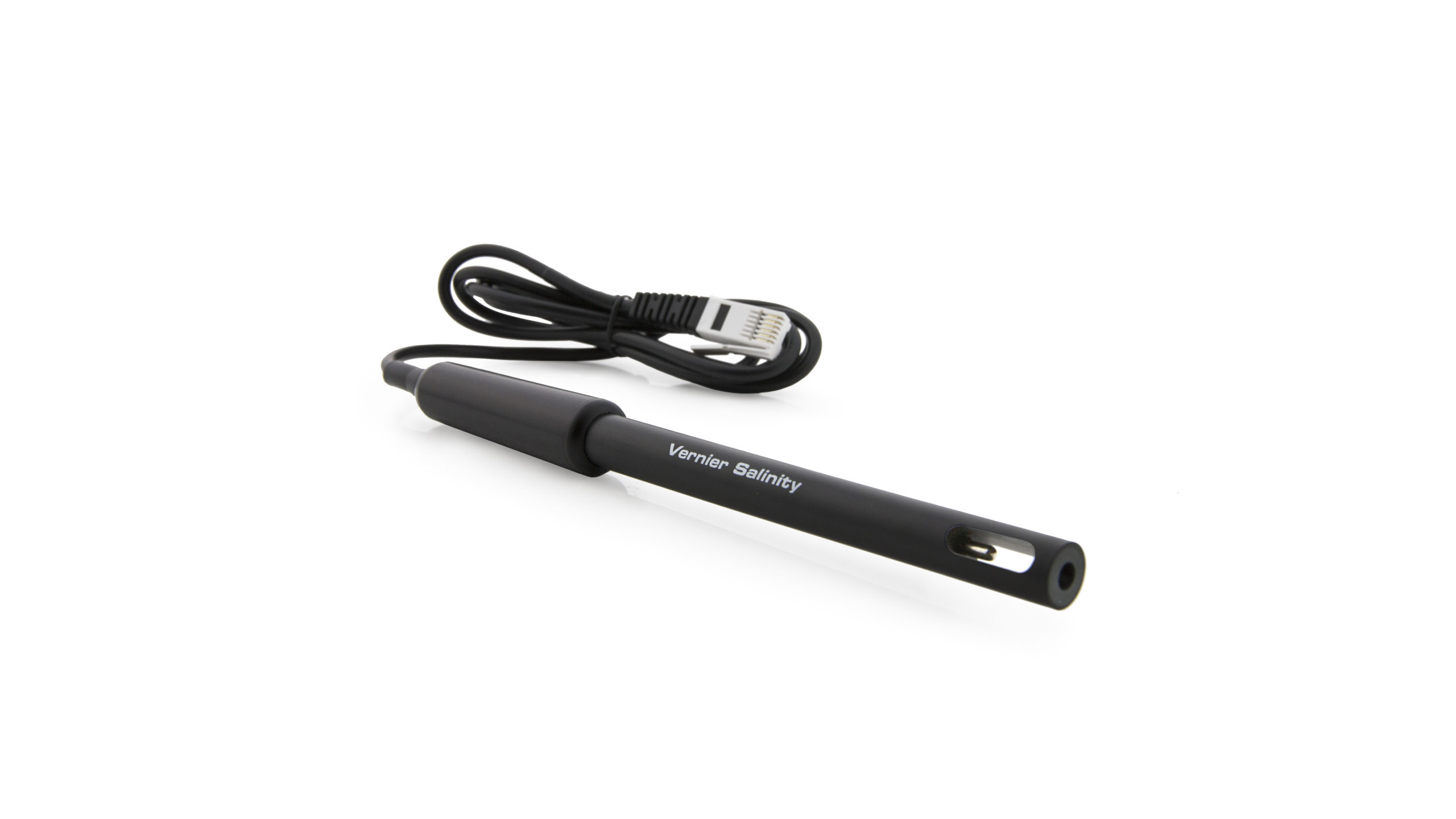Salinity Sensor (SAL-BTA)

Troubleshooting
- Primary Test: Plug in the sensor and start up the data-collection program. Place the sensor in distilled water. The reading should be at or near 0 ppt. Place the sensor in a 35 ppt salinity standard solution. The reading should be at or near 35 ppt. Note: This standard solution can be purchased from Vernier or made by adding 33.03 g reagent grade NaCl to enough distilled or deionized water to make 1.00 liter of solution.
- Secondary Test: Plug in the sensor and start up the data-collection program. Place the sensor in distilled water and then move the sensor to a container of tap water. The readings should change from 0 ppt to a salinity value that is appropriate for your region of the country.
Additional Troubleshooting
- Can I use Vernier water quality sensors in salt water or in a salt water aquarium?
- What is the difference between salinity and conductivity?
Specifications
- Range of Salinity Sensor: 0 to 50 ppt (0 to 50,000 ppm)
- Accuracy
⚬ using factory calibration: ±3% of full-scale reading
⚬ using custom calibration: ±1% of full-scale reading - Response time: 90% of full-scale reading in 10 s.
- Temperature compensation: automatic from 5 to 35 °C
- Temperature range (can be placed in): 0 to 80 °C
- Cell constant: 10 cm-1
- Description: dip type, epoxy body, parallel platinum electrodes
- Dimensions: 12 mm OD and 150 mm length
- Typical calibration coefficients: slope 16.3 ppt/V; intercept 0 ppt
Calibration
Calibrate? For many experiments, calibrating the Salinity Sensor is not required. We store a calibration equation on each sensor before shipping it, which is used as a default by our software.
For the most accurate measurements with this sensor, we recommend calibration. It is a simple process that takes only a few minutes. For instructions for Salinity Sensor calibration, see How do I calibrate my sensor?
CALIBRATION SOLUTION
If you choose to calibrate the Salinity Sensor, you will want an accurate standard solution. Vernier sells a 35 ppt Salinity Standard (SAL-ST). If you prefer to prepare your own 35 ppt standard solution using solid NaCl, use a container with accurate volume markings (e.g., volumetric flask). Add 33.03 g reagent grade NaCl to enough distilled water to make one liter of solution.
Note: The Practical Salinity Scale 1978 was developed relative to a KCl solution. Standard Methods for the Examination of Water and Wastewater states that “A seawater with a conductivity at 15°C equal to that of a KCl solution containing a mass of 32.4356 g in a mass of 1 kg of solution is defined as having a practical salinity of 35.”
Related Products
- Salinity Standard (SAL-ST)
- Go Direct® Salinity Sensor (GDX-SAL)
